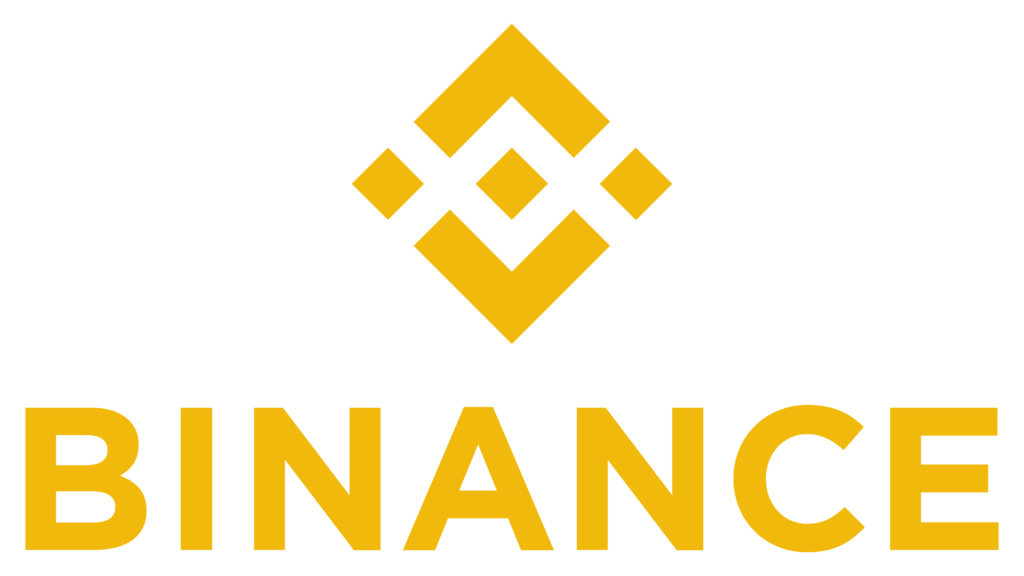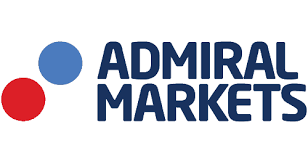
Cryptocurrencies have revolutionized the way we perceive and interact with the world of finance. Among the myriad of digital currencies, Flow has emerged as a promising blockchain platform that has captured the attention of investors and blockchain enthusiasts alike. As the crypto market evolves at an unprecedented pace, many are eager to know what lies ahead for Flow, especially in terms of its price movement. Hence, the Flow price prediction.
In this article, we embark on a journey to explore the potential future trajectory of Flow’s price. Leveraging the power of data analysis, market trends, and fundamental factors, we aim to provide valuable insights into what the future might hold for this dynamic digital asset. It is important to note that any price prediction in the volatile and speculative cryptocurrency market should be approached with caution, as the market is influenced by numerous factors, some of which can be unpredictable.
To set the stage, we will delve into a brief overview of Flow, shedding light on its key features, ecosystem, and the driving forces behind its recent growth. Understanding the underlying fundamentals of Flow will serve as a foundation for our price prediction analysis, enabling us to make informed projections based on both technical and fundamental aspects.
Additionally, we will explore the broader cryptocurrency landscape, considering the impact of market trends, regulatory developments, and investor sentiment on Flow’s future price potential. By analyzing historical data, studying market indicators, and incorporating expert opinions, we strive to paint a comprehensive picture of what the future may hold for this intriguing digital asset.
It is crucial to emphasize that price predictions are speculative in nature and should not be considered financial advice. The cryptocurrency market is characterized by high volatility and inherent risk. Therefore, before making any investment decisions, it is recommended to conduct thorough personal research, consult with financial professionals, and carefully evaluate one’s risk appetite.
So, fasten your seatbelts as we embark on this captivating journey to predict the future of Flow’s price. Join us as we navigate through the complexities of the cryptocurrency market, unraveling the potential growth opportunities and challenges that lie ahead for Flow. Let’s dive into the world of price analysis, market dynamics, and the exciting possibilities that await Flow enthusiasts and investors alike.
What Is Flow?
Flow is a blockchain platform designed to support the development of decentralized applications (dApps) and digital assets. It was developed by Dapper Labs, the same team behind the creation of the popular blockchain game, CryptoKitties. Flow aims to address some of the scalability and usability limitations faced by other blockchain networks, making it more accessible for both developers and end-users.
One of the key features of Flow is its unique architecture, which is optimized for handling high-throughput decentralized applications. Unlike many other blockchains that use a single global consensus mechanism, Flow utilizes a hybrid consensus model. It combines a Proof of Stake (PoS) mechanism called “Proof of Stake Participation” (PoSP) with a unique variant of “Proof of Work” (PoW) called “Proof of Stake Securities” (PoSS). This hybrid model ensures both security and scalability, allowing for faster transaction processing and a more efficient network.
Flow also introduces a resource-oriented programming model, where each account on the network has its own dedicated resources (computational, storage, and bandwidth) called “smart contracts.” This approach enables developers to build complex applications with more predictable performance and easier resource management.
Additionally, Flow places a strong emphasis on user experience and adoption. It provides user-friendly tools and development frameworks, allowing developers to create intuitive and engaging dApps. Flow also aims to enhance the end-user experience by offering features like low transaction fees, fast confirmation times, and a seamless onboarding process.
The platform has gained significant attention and adoption in the realm of non-fungible tokens (NFTs). It has been used for the launch of various high-profile NFT projects, such as NBA Top Shot, which allows fans to collect and trade digital basketball moments.
Overall, Flow aims to be a versatile blockchain platform that can support a wide range of applications, from gaming and digital collectibles to decentralized finance (DeFi) and more. Its innovative architecture, scalability features, and focus on user experience make it an intriguing project with potential implications for the future of blockchain technology.
Flow Token
The Flow token (FLOW) is the native cryptocurrency of the Flow blockchain platform. It serves multiple functions within the ecosystem and plays a vital role in facilitating various activities and transactions.
- Network Security: FLOW tokens are used to secure the Flow network through staking. Validators, who validate and confirm transactions on the blockchain, are required to lock up a certain number of FLOW tokens as collateral. This helps maintain the security and integrity of the network.
- Governance: FLOW token holders have the ability to participate in the governance of the Flow blockchain. They can propose and vote on protocol upgrades, parameter changes, and other decisions related to the platform’s development and direction. This gives token holders a voice in shaping the future of the ecosystem.
- Transaction Fees: FLOW tokens are used to pay for transaction fees on the Flow network. Whether it’s sending tokens, executing smart contracts, or interacting with dApps, users are required to pay a certain amount of FLOW tokens as a fee to use the platform.
- Access to Services and Applications: Many services and applications built on the Flow blockchain may require users to hold and use FLOW tokens to access their features. For example, in NFT marketplaces or gaming applications, users might need FLOW tokens to purchase digital assets, participate in auctions, or access exclusive content.
- Staking and Delegating: FLOW token holders can also stake their tokens to earn additional rewards. By locking up their tokens and participating in the consensus mechanism of the network, users can receive staking rewards in the form of additional FLOW tokens. Alternatively, users can delegate their tokens to validators and earn a portion of the staking rewards based on their delegated stake.
It’s important to note that the Flow token is a utility token designed for use within the Flow ecosystem. Its value can fluctuate based on market forces, supply and demand dynamics, and the overall adoption and success of the Flow platform. As with any cryptocurrency, investing in FLOW tokens carries risks and should be approached with careful consideration and due diligence.
Flow Price Prediction Expert takes
Digital Coin Price
As per the Flow price prediction, the price of FLOW is expected to cross the level of $0.98. By the end of the year, Flow is expected to reach a minimum fee of $0.46. In addition, the FLOW price is capable of getting a maximum level of $1.10.
Wallet Investor
Flow forecast by Waller Investor indicates that it is a high-risk investment option for one year. Your current value might be devalued in the future. The price of Flow coin might trade around $0.048 after a year.
Bitnation
As we recover from the crypto winter, we are expecting that Flow will achieve a maximum price of $0.944966 as the market starts to recover. The minimum expected price is $0.629977 and the average price will hover around $0.787471.
Price Prediction
The price of Flow is expected to reach a minimum level of $0.64 in 2023. The FLOW price can reach a maximum level of $0.74 with the average price of $0.66 throughout 2023.
Flow Price Prediction Technical Analysis
Flow’s current price is $0.603882, and it is ranked #66 among all cryptocurrencies. Flow currently has 1,036,200,000 in circulation, with a total market capitalization of $627,867,856.
Flow’s price has dropped by 6.07% in the last 24 hours. Flow has increased at a steady rate over the last 7 days, increasing 17.72%. This increase has Flow investors excited about their return on investment this week.
FLOW’s price has dropped by 8.34% in the last 30 days, reducing its previous value of $0.658828 by $0.054946. Because of the current downtrend, Flow is currently in a slump. Flow’s price has dropped by 40.03% in the last three months, deducting $0.403091 from its previous value of $1.01.
Buy FLOW on Binance
How Does Flow Work?
Flow operates on a unique architecture designed to provide scalability, usability, and developer-friendly features. The Flow blockchain incorporates several components and mechanisms that work together to enable efficient transaction processing, smart contract execution, and overall network functionality. Here’s an overview of how Flow works:
- Accounts and Resources: In Flow, each user account has its own dedicated resources, including computational capacity, storage, and bandwidth. These resources are known as “smart contracts” and are specific to individual accounts, allowing for more predictable performance and better resource management.
- Cadence Programming Language: Flow employs a resource-oriented programming language called Cadence. Cadence is designed to facilitate secure and reliable smart contract development by enforcing strict resource access rules and providing strong type checking. It helps developers write expressive and efficient code for creating dApps on the Flow blockchain.
- Hybrid Consensus Model: Flow utilizes a hybrid consensus model that combines Proof of Stake Participation (PoSP) and Proof of Stake Securities (PoSS). Validators on the network stake a certain number of FLOW tokens as collateral and participate in the consensus process. PoSP ensures the security and finality of transactions, while PoSS helps mitigate certain attacks by leveraging proof-of-work mechanisms.
- Collection Model: Flow introduces a unique collection model that enables developers to manage complex and interconnected digital assets more efficiently. Collections are containers for multiple assets and can have their own rules, permissions, and configurations. This allows developers to create NFTs and other digital assets with customizable characteristics, providing flexibility for various use cases.
- Interoperability: Flow supports interoperability with other blockchains, enabling seamless asset transfers and communication between different networks. This is achieved through the use of “interchain accounts” that allow tokens to be transferred between Flow and external blockchains.
- Developer Tools and Infrastructure: Flow provides a range of developer tools and infrastructure to simplify the development process. This includes user-friendly software development kits (SDKs), integrated development environments (IDEs), and testing frameworks that streamline the creation, deployment, and management of dApps on the Flow platform.
- User Experience and Accessibility: Flow aims to enhance the user experience by minimizing transaction fees, reducing confirmation times, and offering a seamless onboarding process. The platform aims to make blockchain technology more accessible and user-friendly, particularly for non-technical users.
By combining these features and mechanisms, Flow aims to provide a robust and scalable blockchain infrastructure for a wide range of applications, from gaming and NFTs to DeFi and more. Its focus on user experience, developer-friendly tools, and unique architecture sets it apart from other blockchain platforms, offering a promising ecosystem for innovation and adoption.
Flow Price Prediction
Overview
| Year | Minimum Price | Average Price | Maximum Price |
| 2023 | $0.725479 | $0.846392 | $0.906849 |
| 2024 | $1.21 | $1.33 | $1.51 |
| 2025 | $1.81 | $1.93 | $2.12 |
| 2026 | $2.42 | $2.54 | $2.72 |
| 2027 | $3.02 | $3.14 | $3.33 |
| 2028 | $3.63 | $3.75 | $3.93 |
| 2029 | $4.23 | $4.35 | $4.53 |
| 2030 | $4.84 | $4.96 | $5.14 |
Flow Price Prediction 2023
According to PricePrediction’s deep technical analysis of past FLOW price data, the price of Flow in 2023 is expected to be around $0.73. The Flow price can reach a maximum of $0.82 in USD, with an average trading value of $0.76.
According to the AMBCrypto analysis, the price of Flow in 2023 should range between $1.39 and $2.08, with the average price being around $1.73.
Flow Price Prediction 2025
The token could trade at an average price of $2.20 during the year, according to the CryptoNewsZ Flow price prediction 2025. Flow coin’s maximum price could be around $3. If the downturn continues, the bare minimum could be $2.05. Buying can be started if the price shows a trend reversal.
If the upward trend continues until 2025, BitcoinWisdom predicts that it will reach $2.12, and FLOW will profit. If the market falls, the goal may not be reached. In 2025, FLOW is expected to trade at an average price of $1.94 and a low of $1.82.
Flow Price Prediction 2030
Based on market sentiment, Bitnation predicts that FLOW will continue to rise towards $5.31 in 2030. If this support is not obtained, Flow could average around $5.13 and bottom out at $4.95.
According to AMBCrypto’s analysis, the price of Flow in 2030 should range between $7.27 and $10.91, with the average price being around $9.09.
FAQs
Is FLOW a good investment?
Flow cryptocurrency may be a good investment option due to its high potential for recovery. Traders should be prepared for a shift in momentum and price action at any time.
How high can Flow go?
This year, the average price of Flow (FLOW) could reach $0.847905. Flow is expected to exceed $3.94 in the next five years.
Does Flow have a future?
Flow’s future is highly dependent on the overall performance of the cryptocurrency industry. When it comes to investing in FLOW, you must ensure that you are employing the proper strategy. This investment is not appropriate for those with an asymmetric risk profile. However, it remains an excellent investment for those with a high risk tolerance and a solid financial position. FLOW, in addition to its speculative nature, provides exposure to global technology and an ever-expanding ecosystem.







